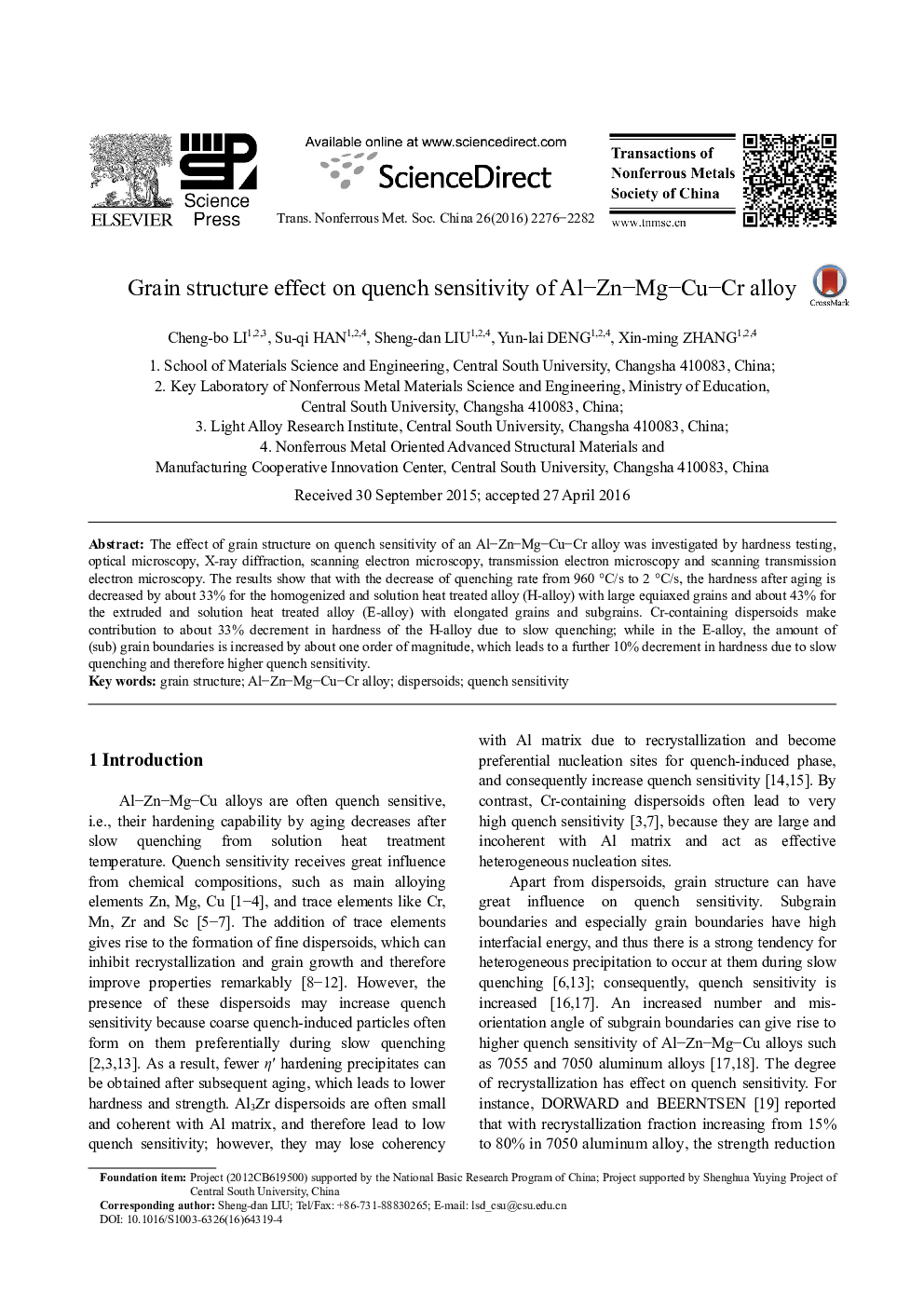| Article ID | Journal | Published Year | Pages | File Type |
|---|---|---|---|---|
| 8012205 | Transactions of Nonferrous Metals Society of China | 2016 | 7 Pages |
Abstract
The effect of grain structure on quench sensitivity of an Al-Zn-Mg-Cu-Cr alloy was investigated by hardness testing, optical microscopy, X-ray diffraction, scanning electron microscopy, transmission electron microscopy and scanning transmission electron microscopy. The results show that with the decrease of quenching rate from 960 °C/s to 2 °C/s, the hardness after aging is decreased by about 33% for the homogenized and solution heat treated alloy (H-alloy) with large equiaxed grains and about 43% for the extruded and solution heat treated alloy (E-alloy) with elongated grains and subgrains. Cr-containing dispersoids make contribution to about 33% decrement in hardness of the H-alloy due to slow quenching; while in the E-alloy, the amount of (sub) grain boundaries is increased by about one order of magnitude, which leads to a further 10% decrement in hardness due to slow quenching and therefore higher quench sensitivity.
Related Topics
Physical Sciences and Engineering
Materials Science
Metals and Alloys
Authors
Cheng-bo LI, Su-qi HAN, Sheng-dan LIU, Yun-lai DENG, Xin-ming ZHANG,
